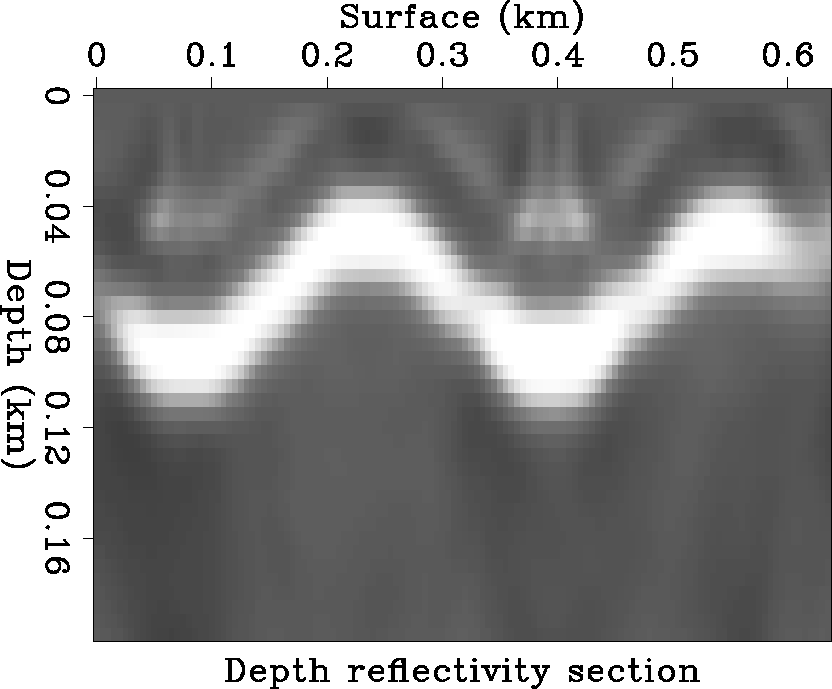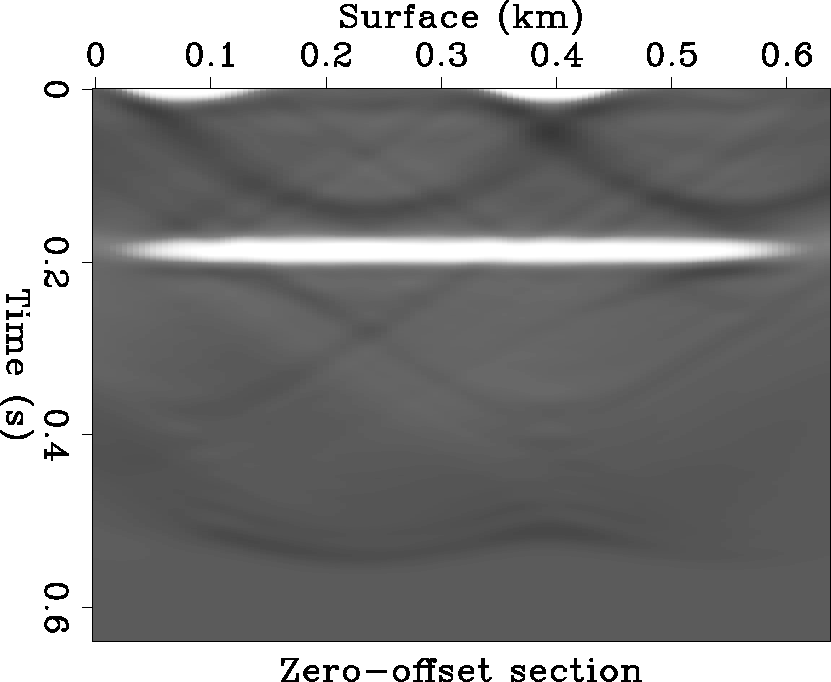




Next: PRESTACK DATUMING
Up: POSTSTACK DATUMING
Previous: Datuming from a planar
This section describes datuming from a planar datum downward to
another planar datum through an irregular velocity contrast interface.
By use of a
rectangular strip, the sea surface wavefields in Figure 8 are
downward datumed to a planar datum below the water bottom. The two sides
and the bottom are designed as absorbing boundaries. By using the
sea surface wavefields as boundary conditions, and running the wave
equation backward in time, I obtain the subsurface reflection wavefields
at the planar datum z=0.1, which is shown in Figure 13, and the
reflectivity image between the sea surface and this new datum
(Shih and Levander 1988; Harris and McMechan, 1992), which is
shown in Figure 12. A simple migration scheme can be used to image
accurately the zero-offset section from this new datum.
This example demonstrates that we can use the sophisticated though expensive
reverse-time migration to migrate across the complex datum of the velocity
model.
Beyond that, we can use a less sophisticated but fast migration scheme,
such as finite-difference paraxial wave equation migration.
Strip.H
Figure 12 The depth reflectivity
section between the sea surface and the lower planar datum. It contains the
sea floor reflector.
|
|  |





depth.H02
Figure 13 The extrapolated
wavefields at the lower planar datum z=0.1 below the water bottom. These
wavefields are free from the effects of the water bottom topography.
|
|  |










Next: PRESTACK DATUMING
Up: POSTSTACK DATUMING
Previous: Datuming from a planar
Stanford Exploration Project
11/17/1997


